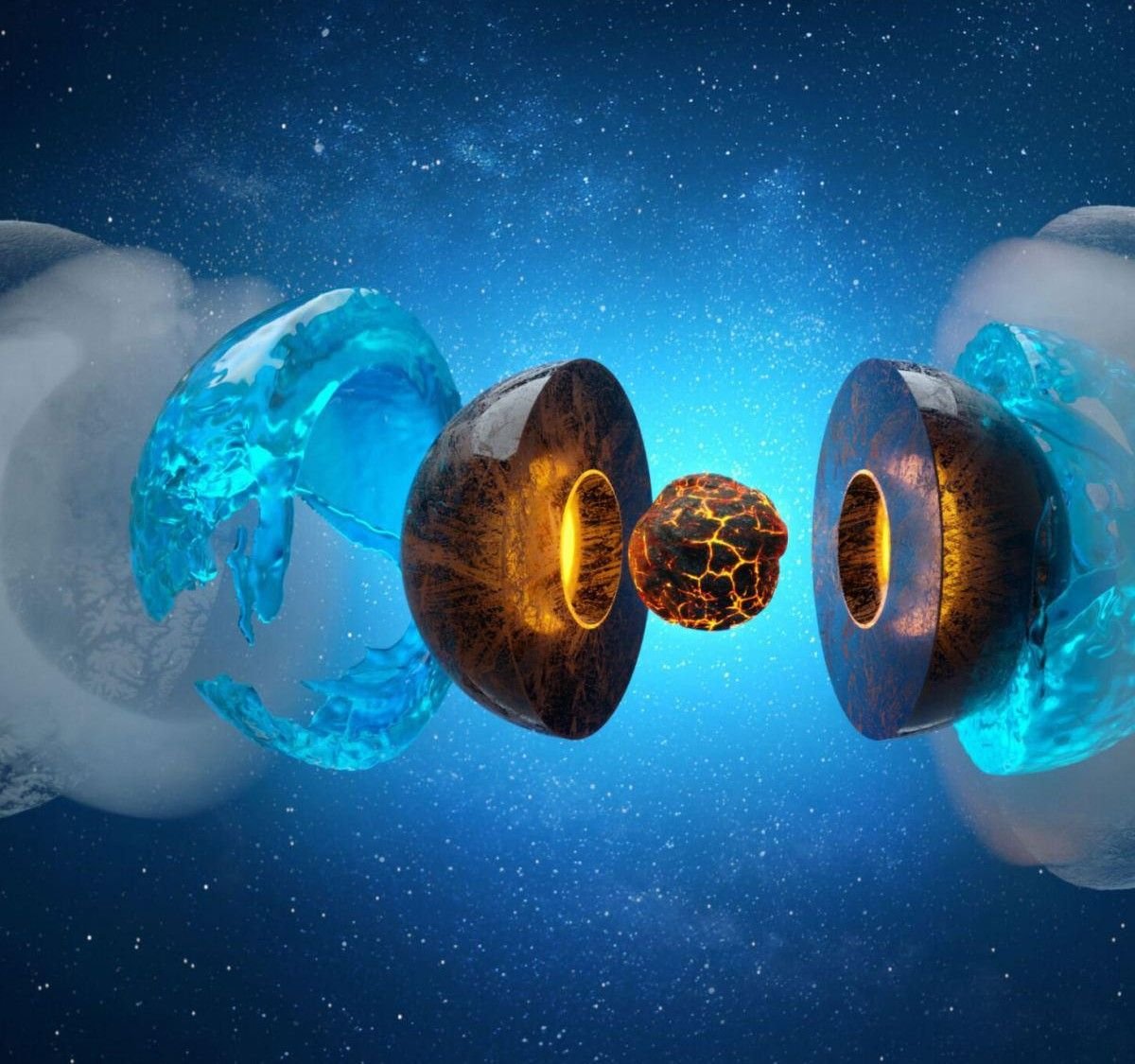When NASA’s Voyager 2 probe passed by Uranus in January 1986 and Neptune in August 1989, it made a surprising discovery: Neither of the two iconic ice giants had a bipolar magnetic field as strong as Earth’s. The discovery raised questions about the composition, temperature and dynamics of the cores of these icy worlds.
Some scientists have theorized that the interiors of these planets contain superionic water ice, an exotic state in which protons pass through a crystalline oxygen lattice. There are even those who are betting on a massive diamond rain, in which carbon atoms compressed under very high pressure will become “planetary jewels” and the rain will fall.
A planetary scientist from the University of California, Berkeley, US, proposes a new theory in a recent study published in the journal Proceedings of the National Academy of Sciences (PNAS). For him both Planets have immiscible layered interior structures that remain separate, like oil and water in a container.
Simulating the cores of Uranus and Neptune
Ten years ago, Burkhard Militzer, the author of this study, tried to solve the problem using computer simulations of blue planets with about 100 atoms of carbon, oxygen, nitrogen and hydrogen ratios. But last year, with the help of machine learning, he managed to run a computer model simulating the behavior of 540 atoms.
In this model, which guided the current work, Militzer discovered that “layers form naturally when atoms are heated and compressed,” a statement said. To the professor in the Departments of Earth and Planetary Sciences and Astronomy, Just below the cloud layers is a deep ocean of water, and below that is a highly compressed liquid of carbon, nitrogen, and hydrogen..
Computer simulations revealed that in the planet’s interior, water, methane and ammonia form separate layers due to the compression of hydrogen. except methane and ammonia. These layers, which do not mix with each other, are responsible for the fact that neither Uranus nor Neptune has a magnetic field like ours.
What are the results of the study of Uranus and Neptune?
Militzer’s simulations predict that beneath Uranus’s 4,800-kilometer atmosphere is a water-rich layer 8,000 kilometers thick, and beneath that is another layer 8,000 kilometers thick, but composed of hydrocarbons. The core of the seventh planet is rocky and about the size of Mercury, the author says.
Larger than Uranus, Neptune is smaller in diameter, has a thinner atmosphere, but equally thick layers of water and hydrocarbons. Larger than Uranus, Neptune’s core is almost the size of Mars.
Militzer now hopes to test whether elements naturally stratify under extreme heat and pressure in the laboratory, preserving their original chemical ratios during the formation of the Solar System.
Did you like the content? Stay up to date with more astronomical topics like this on TecMundo and enjoy finding out if there are ‘hidden’ exoplanets behind the Neptune mountain range. Until later!
Source: Tec Mundo
I’m Blaine Morgan, an experienced journalist and writer with over 8 years of experience in the tech industry. My expertise lies in writing about technology news and trends, covering everything from cutting-edge gadgets to emerging software developments. I’ve written for several leading publications including Gadget Onus where I am an author.











